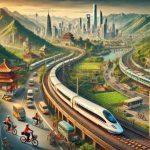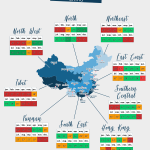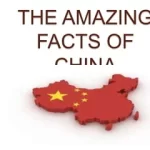
The Basic Information of Beijing-Hangzhou Grand Canal
Grand Canal of China(中国大运河) with a full name of Beijing-Hangzhou Grand Canal(京杭大运河), and generally called Grand Canal for short, is the longest and oldest ancient artificial canal in the world, with a total length of 1794 kilometers. It has 16 times longer than Suez Canal, and 33 times longer than Panama Canal. Staring from Beijing in the north to Hangzhou in the south, it crosses Beijing, Tianjin, Hebei province(Shijiazhuang as the capital), Shandong province(Jinan as the capital), Jiangsu province(Nanjing as the capital) and Zhejiang province(Hangzhou as the capital), and finally makes Hai River(海河), Yellow River(黄河), Huai River(淮河) and Yangtze River(长江) and Qiantang River(钱 塘江) in connections. Due to the long-time disrepair, currently, it just has a traffic mileage of 1442 kilometers, and all-year opened section is only 877 kilometers, generally on the south of Yellow River. Grand Canal does a great contribution to the south-north economic balancing, development and interaction, as well as the cultural and political integration, especially largely promotes the industrial and agricultural development on both sides. Together with Great Wall(长城) and Kariz(坎儿井, a popularized and traditional water conservancy and irrigation system in northwest China, mainly in Xinjiang Autonomous Region), it is one of three greatest ancient projects of China.

The Geography of Beijing- Hangzhou Grand Canal
The geographic areas that the Grand Canal flow through include Tongzhou District of Beijing, Wuqing District of Tianjin, Langfang, Cangzhou, Hengshui and Xingtai of Hebei province, Dezhou, Taian, Liaocheng, Jining and Zaozhuang of Shandong province, Xuzhou, Suqian, Huaian, Yangzhou, Zhenjiang, Changzhou, Wuxi and Suzhou of Jiangsu province, as well as Jiaxing, Huzhou and Hangzhou of Zhejiang province, roughly comprised of 20 cities of China. The area along the Grand Canal is one of the most richest and developed areas in China with a great industrial system. Yanzhou, Jining, Zaozhuang, Tengzhou, Feng County, Pei County, Xuzhou and Pizhou are all the important coal mining centers. Shanghai, Nanjing, Xuzhou, Zhenjiang, Changzhou, Wuxi, Suzhou, and Hangzhou are all the industrial cities of China.




















